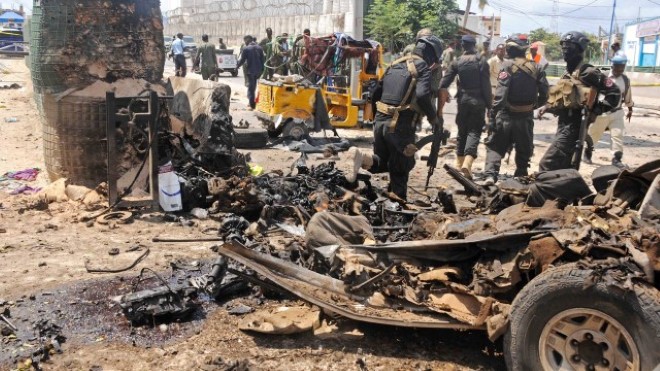Stratfor
Tuesday, August 16, 2016

Somali security forces investigate the scene of a suicide attack in Mogadishu on July 31, 2016. (MOHAMED ABDIWAHAB/AFP/Getty Images)
Reports have emerged that Abu Ubeida, the leader of Somalia's al Shabaab militant group, may have been captured or killed in an Aug. 11 military operation in southern Somalia. Since then, news of ongoing security activities in Saakow, a town located in an area on the Juba River controlled by al Shabaab, have continued to trickle out of various media outlets. The alleged involvement of both Somali and U.S. special operations forces, as well as rumors of the interdiction of local communications networks, hinted that a significant offensive against key al Shabaab fighters or facilities was in the works. However, the news that Ubeida and several other top leaders were the targets of the raid could indicate a critical tactical victory in the ongoing effort to rein in the militant group.
Ubeida, also known as Ahmed Omar and Ahmed Diriya, became the leader of al Shabaab in September 2014 after his predecessor, Ahmad Abdi Godane, was killed in a U.S. airstrike. Since that time, Somali and U.S. officials have successfully targeted a number of high-ranking al Shabaab figures in a series of raids and airstrikes. (In particular, leaders of the group's internal intelligence organization, Amniyaat, have been caught in the government's crosshairs.) The sharp improvement in the government's results can largely be attributed to the development of intelligence sources, better Somali intelligence capabilities, or the focus of U.S. intelligence assets on tracking and targeting individuals of interest in Somalia. Therefore, while the death or capture of the group's leader is itself a notable event, the raid also reiterates the increasing success of Somali and U.S. attempts to strike at al Shabaab's core leadership.
Meanwhile, the removal of the group's most important leader could herald yet another shift in its focus or tactics. In the past, disruptions in al Shabaab's upper ranks have led to significant adjustments in how the group conducts attacks abroad or uses foreign fighters inside Somali borders. The 2013 attack on Nairobi's Westgate Mall, for instance, came not long after Godane assumed control of the group. Similarly, al Shabaab conducted several attacks against passenger aircraft using laptop bombs after Ubeida took charge, a tactic the group had not focused on prior to his management. The answers to many of the thorny questions facing al Shabaab, such as whether to align more closely with al Qaeda or the Islamic State, could also be heavily influenced by who is at the group's helm.
For now, though, the operation will likely force al Shabaab's remaining leaders into hiding, or at the very least, to take extreme operational security measures to obscure their locations and activities. This could take a heavy, albeit temporary, toll on the group's ability to operate in Somalia in the coming months. And as al Shabaab searches for Ubeida's successor, the group's cohesion — something it has long struggled to maintain — will be put to the test.